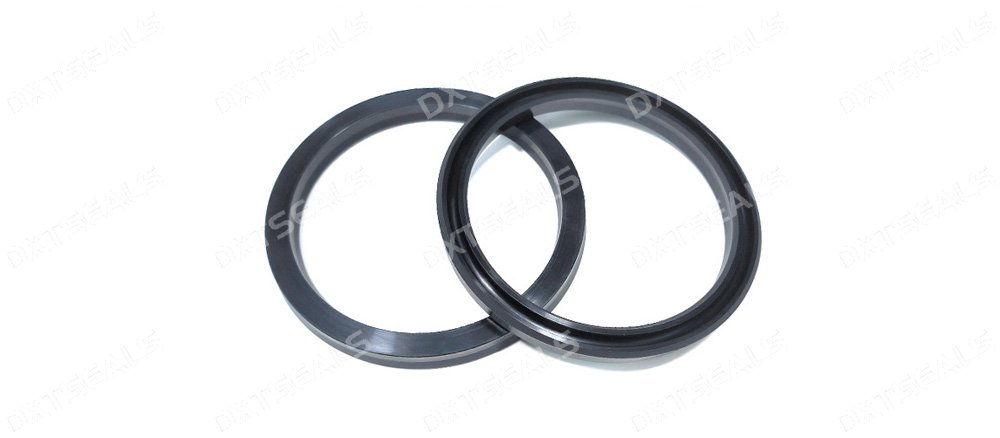
When it comes to sealing, cushioning, and fastening applications, washers are indispensable components across industries. Plastic and rubber washers are two popular types, each offering unique benefits and performance characteristics. Choosing between them depends on the specific requirements of your application.
In this article, we’ll compare plastic washers and rubber washers, explore their properties, and reveal the industries and scenarios where they perform best.
Key Characteristics of Plastic Washers
Plastic washers are manufactured from synthetic polymers like nylon, polyethylene, polypropylene, and PTFE. Their primary features include:
1. High Strength and Durability
Plastic washers are known for their excellent strength-to-weight ratio, making them lightweight yet highly durable.
2. Corrosion Resistance
Plastic materials resist rust and corrosion, making these washers ideal for wet and chemical-laden environments.
3. Temperature Tolerance
Certain plastics, like PTFE and polycarbonate, can withstand extreme temperatures without deforming or losing integrity.
4. Electrical Insulation
Plastic washers are non-conductive, making them suitable for electrical and electronic applications.
5. Chemical Resistance
They exhibit excellent resistance to many chemicals, including oils, solvents, and acids.
6. Cost-Effectiveness
Plastic washers are typically more affordable than their metal or rubber counterparts, offering an economical solution for various applications.
Key Characteristics of Rubber Washers
Rubber washers, crafted from materials such as Nitrile (NBR), EPDM, silicone, and Viton, are prized for their flexibility and sealing properties.
1. Superior Sealing
Rubber washers create airtight and watertight seals, preventing fluid or gas leaks in critical applications.
2. Elasticity and Flexibility
Rubber's ability to compress and return to its original shape makes it perfect for applications requiring vibration damping.
3. Temperature Resistance
Rubber washers, especially those made of silicone or FKM, can endure a broad temperature range, from sub-zero to high-heat environments.
4. Resistance to Aging
Modern rubber materials resist cracking, hardening, and degradation due to exposure to UV rays, ozone, and weather.
5. Compatibility with Fluids
Rubber washers are resistant to automotive fluids, water, and oils, making them versatile in various sealing applications.
6. Noise and Vibration Reduction
Rubber's natural damping properties help reduce noise and absorb vibrations in mechanical systems.
Comparison: Plastic Washers vs. Rubber Washers
| Property | Plastic Washers | Rubber Washers |
|---|---|---|
| Strength and Durability | Lightweight but strong | Flexible and compressible, less rigid |
| Sealing Capability | Limited sealing properties | Excellent sealing against fluids and gases |
| Temperature Range | Withstands both high and low temperatures (depending on material) | Wide range, especially for silicone and FKM |
| Chemical Resistance | High resistance to chemicals, solvents, and oils | Compatible with many fluids, though some degrade under harsh chemicals |
| Flexibility | Rigid and less flexible | Highly elastic and flexible |
| Electrical Insulation | Non-conductive | Typically non-conductive, but not always |
| Cost | Generally more affordable | Moderate, depending on material |
Applications of Plastic Washers
Plastic washers are commonly used in:
- Electronics: Insulate and protect circuits from electrical contact.
- Chemical Processing: Withstand corrosive environments without degrading.
- Aerospace and Automotive: Reduce weight while maintaining durability.
- Medical Equipment: Meet hygiene standards and resist cleaning agents.
- Construction: Provide lightweight yet strong support for fasteners.
Applications of Rubber Washers
Rubber washers are ideal for:
- Automotive and Machinery: Seal joints, reduce vibration, and prevent fluid leaks.
- Plumbing and HVAC: Provide watertight seals for pipes and ducts.
- Aerospace: Withstand extreme pressures and temperatures in critical components.
- Consumer Goods: Reduce noise in household appliances and electronics.
- Oil and Gas: Seal components exposed to high-pressure fluids.
How to Choose Between Plastic and Rubber Washers
-
Evaluate Environmental Conditions:
- Use plastic washers in dry, chemical-rich, or lightweight applications.
- Opt for rubber washers in wet, high-pressure, or vibration-heavy environments.
-
Assess Temperature Requirements:
- For extreme heat or cold, select materials like PTFE (plastic) or silicone (rubber).
-
Consider Sealing Needs:
- Choose rubber washers for superior sealing and flexibility.
-
Budget and Longevity:
- For cost-sensitive projects, plastic washers offer a more economical option.
-
Consult Experts:
- Work with a reliable manufacturer to select the optimal washer material for your specific application.
Conclusion
Both plastic and rubber washers bring distinct advantages to the table, excelling in their respective domains. While plastic washers dominate in lightweight, corrosion-resistant, and non-conductive applications, rubber washers lead in sealing, flexibility, and vibration damping.
Understanding your specific application requirements—such as environmental conditions, mechanical demands, and cost constraints—will guide you to the right choice. Whether you’re in the automotive, aerospace, medical, or construction industry, selecting the correct washer material ensures optimal performance and durability.
For high-quality plastic and rubber washers tailored to your needs, consult with trusted suppliers like DXTSEALS who can provide expert guidance and custom solutions.
